Just starting, for now here is Helping K9s Candlelight vigil.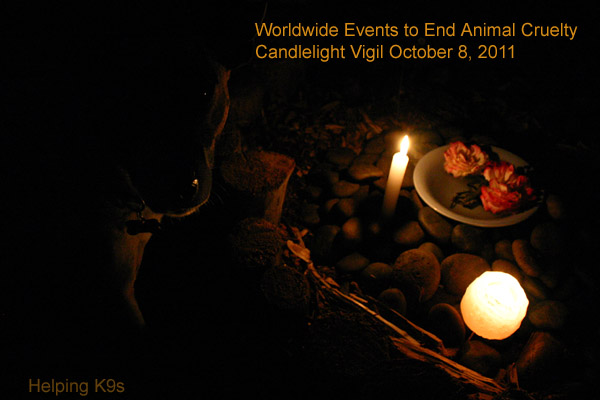
All posts by cwolters
Puppy play, socialization and no hurry on formal training
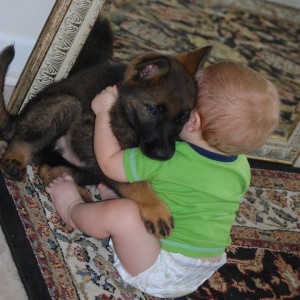 Proper socialization and enough puppy play time is super important for the development into a happy, confident and well-balanced dog.
Proper socialization and enough puppy play time is super important for the development into a happy, confident and well-balanced dog.
Do you want a happy, confident, friendly and well behaved dog? A companion which is a pleasure to be around, without fear he/she will attack people or other dogs? Most everyone does – and this process starts with lots of playing, safe explorations and proper socialization as a puppy and continues for years.
So what does one need to do?
Socialization – making social – well behaved and relaxed with others and their environment, including newly met 2- legged, 4-legged …and winged fellow creatures as well as situations.
For that to happen, you need your canine friend to have a healthy level of confidence and balance.
Socialization – Introducing and familiarizing a canine to new experiences – including people, sounds, places, objects, other animals – in ways that help the dog learn how to respond to and interact with these experiences appropriately and without fear.Very Important: you must be in control of the experiences – you do not want to imprint a fearful disposition in your puppy.
The importance of PLAY
“Puppies need play far more than they need structured learning. Research shows that play fosters impulse control, produces brain-growth factors, and helps create pro-social circuits in the brain. The more our puppies play the more sociable and well-behaved they’ll be. Meanwhile, dogs who’ve had fewer opportunities to play are more likely to be aggressive. This isn’t just due to lack of socialization, it’s that play is vitally important for healthy, lasting growth of the connections between the aggression circuits and the impulse-control center in the brain”. – Lee Charles Kelly
Between the ages of 3 weeks to 4 months, your pup is very impressionable, it is important for your puppy to be exposed safely to a large variety of experiences…people, other animals, places, smells, sounds, sight and so on. Most of the time, because it’s vulnerability to (often deadly) diseases, this will happen close to it’s home environment. Playing with litter mates, exposure to friendly people and handling, living with cats or chickens. Make sure you don’t overwhelm your puppy. Some are more daring and outgoing, others temperament is more cautious and shy. Make all these new experiences fun, safe and happy. – Allow your puppy to safely explore and PLAY – a LOT.
Invite all of your friends and children to handle your puppy as it serves this goal..
It is crucial to carefully introduce a pup to a variety of stimuli every day, and to ensure that the experiences are positive!!!!
“It’s much better to let puppies develop at their own pace without overt external pressure. Yes, we should provide every opportunity for our puppies to learn and explore and become bold and confident, all of which happens best through playing with other pups and adult dogs (and with us!), and comes not at all from being told to sit still, lie down on command, or walk nicely on a leash”. – Lee Charles Kelly
These socialization efforts make the difference in the dog’s outlook on life. Instead of reacting fearfully, and possibly aggressive to new experiences, the dog is comfortable when encountering new things, animals and people.
“Puppies exhibit some of the strangest, seemingly unrelated, and illogical physical movements imaginable. Why? Because in terms of learning, and for the development of motor skills, and even for the proper growth of his young brain, a pup needs to just plain move his little body around constantly in meaningless ways. And he needs to do that a whole lot more than he needs to be taught how to sit still in puppy class. So it seems to me that all too many trainers firmly (yet wrongly) believe they’re not interfering with the puppy’s natural development when they get that little guy to finally sit still and pay attention. And when they do get the puppy to obey, they often get a sense of satisfaction and achievement that, to me, is totally unwarranted because of the potential learning deficits they may have just created in that poor little doggie’s brain.” Lee Charles Kelly
One of the crucial things puppies learn in their interactions with other puppies is bite inhibition. Biting during play is natural and frequent, but what a young dog will learn is that if he bites too hard and causes pain, then the dog he has bitten will not want to play with him anymore, and that is something very bad. So he learns to moderate his bite – something important for play and interactions later in life, when his bite has become very strong.
Puppies go through stages of development. After 4 months, one such phase starts – early adolescence – pay attention to the shifts and adjust your socialization process. Continue exposing him/her to a variety of situations, people and dogs or other animals every day. The more the better – without causing him stress or wanting to withdraw – and without allowing aggression. It can be new – but not overwhelming and threatening. Be there to manage all new exposure and experiences.
Go on frequent outings and explorations.
Allow your puppy or adolescent to approach something new at his pace, with encouragement from you, but more importantly, show him confidence yourself and how to investigate the new thing.
When should you start more formal training?
If sit still, lie down on command, or walk nicely on a leash are to be taught at all (and of course they should be), it’s best to wait until the puppy’s body, brain, and emotions are more developed, which happens naturally and best, at least initially, through free play. And when you do teach a pup these things (preferably not until after 6 or 7 months), it’s best to teach them as part of an active, high-energy game, where the puppy gets to win by obeying. That’s because the more actively the whole organism is involved in the learning process — the dog’s emotions, his kinetic energy, his instincts, and his brain — the better and faster he’ll learn.
If you picked up a dog from the shelter who is already past the puppy stage, you can often tell by how he/she approaches things and people in the environment what his prior experiences are.
A dog who has never seen birthday balloons or a wheelbarrow – might bark at them till you show him it’s ok – it is funny to watch – and a good opportunity to show him how to investigate something new and relax about it.
Bad experiences with other dogs – you might see fear aggression rather than friendly approach or willingness to play. In socialization both the quality and quantity of his exposure to other beings and situations matter. Socialization is more general and category-based than your personal one-on-one relationship with your dog.
What if you dog “missed out” on early socialization? Despair not – he can still become a well socialized dog – but it might take, in some cases, a lot more time and patience.
A Sad Story – as told by Lee Charles Kelly
When my dog Fred was a pup I took him to Central Park every morning to play with the other dogs. (In New York the leash laws are suspended in all city parks until 9 A.M.) And we used to see this affable, engaging older gentleman (he was about the same age I am now, actually, late 50s) with an amazing dog who was totally trained by the time she was four months old. It was remarkable how obedient she was; she’d obey any and all commands without hesitation. He had even gently taught her how to walk next to him, off leash, to and from the park every day. Pretty cool, huh?
Yes, except I ran into him about a year later and he said something very interesting. He said that even though his dog was still very obedient he had a feeling that she was also very unhappy. Then he asked me if I thought dogs could get depressed.
“Of course,” I said. “Why do you ask?”
“Because she’s forgotten how to play,” he said. “She just doesn’t seem to get any fun out life.”
Do not take your puppy to an obedience class. Wait. It’ll be all right. In fact, everything will be fine. Just wait…
 |
| Hanging out together is an important part |
Puppy raising and training
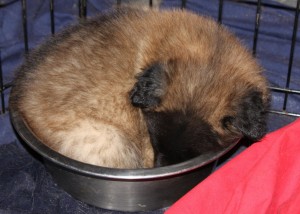 Here are some links to very useful puppy management tips 🙂
Here are some links to very useful puppy management tips 🙂
Please always remember that you know your dog and life best. Just keep in mind that your puppy is a beautiful young being just exploring the world, and just like with a baby, will need loving care and guidance, some rules and discipline, lots of happy play – but not have their energy smashed.
Puppy Training at 8-12 weeks Make sure you read the comments on this one too
Distract and praise – redirecting your puppy
Housebreaking schedules – some useful guidelines please remember guidelines are not rules.
The perfect day – Jon Katz – Going Home
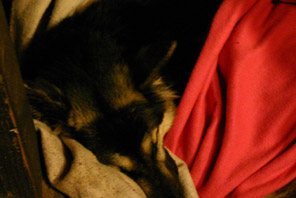
One thing I realized, way before things went the way they did, was my deep gratitude for working with and being with Skye. The sheer delight at observing her, the privilege of getting to know her, the opening of my heart in such a short time was amazing to see. Somewhere I read: and take many pictures while you can. It might have been from a youtube video of a young German shepherd who was poisoned, and I could tell the owner had been deeply affected. While Skye is now in the best home I could find for her – she is doing probably much better than I am :). May this be a reminder for you to cherish your time with your 4 legged or winged companions – and allow them to do their magic.
This is excerpted from Jon Katz’s new book, “Going Home: Finding Peace When Pets Die”.
It is possible to take something beautiful and lasting out of the heart-wrenching experience of seeing the animal you love move inexorably toward death. Nobody can take the grief away, nor should anyone try, but our love for animals is nothing but a gift, and it keeps on giving, even when they go home.
A man named Harry, an Iraq war veteran and tennis coach from Minnesota, hit upon a simple and profound idea to transform this otherwise sad experience into a blessed one.
It was a gray morning when the vet told Harry that his dog Duke’s heart was failing and that it wouldn’t be long before he died. Harry was not surprised, but still, the news depressed him. Listening to the vet, Harry later told me, he’d gotten an idea, one he thought would pay tribute to his life with Duke and give him something to feel besides sadness and loss.
“Tomorrow, I’m going to give you a Perfect Day,” he said quietly to Duke as they left the vet’s office. He would take the day off from work and create a sweet memory with his dog. It would be a special day, filled with all the things Duke loved most, as close to perfect as Harry could make it. He would take his Canon PowerShot along to capture some images of the day, to preserve the memories.
Duke was a border collie/shepherd mix. He had always been a lively, energetic dog and would herd anything that moved. Walks, work, food, Frisbees, red balls—these were the things Duke loved, along with chasing balloons and popping them.
Harry went shopping for supplies, and when he came back Duke was napping on his dog bed. He went over, lay down next to the dog, and hugged him. “Pal,” he whispered, “tomorrow is for you, your Perfect Day.” He was embarrassed to tell his wife, Debbie, about the plan, but she sensed what was going on and gave the two of them the space they needed. It was her belief that the dog, more than anything else, helped Harry heal from the trauma of Iraq. He couldn’t look at Duke without smiling, and when he had first come home, he hadn’t smiled too often.
At eight the next morning, Harry got up. Duke was lying on his bed, which was next to Harry and Debbie’s. The dog rose a bit slowly, then followed Harry down the stairs and into the kitchen. Harry opened the refrigerator and took out a hamburger patty and two strips of bacon, cooked the night before. He put them on a plate and into the microwave.
Duke was riveted. When the plate came out—Harry touched it to make sure it was warm but not hot—he dumped the meat into Duke’s bowl, along with his heart pills. It was as if Duke couldn’t believe his eyes. He was almost never given people food. Looking up at Harry, as if asking permission, he waited until Harry nodded and said, “OK, boy,” before inhaling the food.
A feeling of sadness came over Harry as he thought about how Duke would soon be gone. He wandered into the living room and lay down on the couch. Duke came over and curled up next to him. Harry began to sob, softly, then more deeply and loudly; Duke gently licked his face.
His dog was dying. But they could spend one last day together.
After a few minutes, Harry rose to get dressed. Although he worried about straining the dog’s heart, he let Duke follow him up the stairs. On this day, Duke could do anything he wanted. No corrections. He sat on the bedroom floor and watched Harry put his clothes on. When Harry said “Sneakers,” Duke labored to get up onto his feet, walked over to the closet, and brought Harry his white running shoes. Harry had enjoyed training his dog to bring him his sneakers, and Duke seemed to love it too.
Harry went back downstairs, followed by Duke. He picked up a bag from the pantry and walked out into the yard. Inside the bag were two dozen high-bounce red balls. One at a time, he threw them and bounced them off the back fence. Duke tore after one gleefully, then another, catching some, narrowly missing others as they whizzed past his head.
When Duke started to pant, Harry stopped.
Next they went to the town pond. Harry sat by the water’s edge while Duke waded in, paddled around, swam back, shook himself off, then repeated the routine about a dozen times. Every few minutes Harry tossed the dog a liver treat. It practically rained the small and pungent treats. Once again, Duke looked as if he could hardly believe his good fortune.
They came back to the house and napped. After lunch, Harry took Duke to the vast state park outside of town. He picked a flat, gentle trail, and the two of them walked a couple of miles. Eventually, they came to a stone abutment with a beautiful view. Harry walked over to the edge and sat down. Duke clambered out and curled up beside him. It was a gorgeous afternoon, and the wind ruffled the dog’s hair. Duke held his nose up to the wind, picking up the scents of the earth.
God, I love this creature, Harry thought. I never feel this peaceful, this much at ease. It is something to remember, to honor.
They sat together for nearly an hour, enjoying a bond of complete understanding and affection. If only the world could stay like this, Harry thought, this simple, this good.
Harry knew that Duke was tired, so they took their time walking back, stopping frequently to rest. A few years earlier, Duke could have hiked all day, and sometimes they did that together. But not anymore.
When they got home, Harry cooked Duke some prime sirloin, then chopped it up. The dog was beside himself, looking up at Harry as he ate, expecting the food to be taken away. That evening, Harry put one of his favorite Clint Eastwood movies into the DVD player and Duke hopped up onto the couch, put his head in Harry’s lap, and went to sleep. When the movie was over, Harry carried the dog up the stairs and laid him down on his bed.
Several weeks after the Perfect Day, when Harry came home from work, Duke was not there by the door to greet him, and he knew he was gone. He went into the living room to find Duke dead. He knelt by his dog, closed his eyes, and said a prayer. Then he dug a deep hole in the backyard and buried Duke there, along with some bones, his collar, and some of his beloved red balls.
Of all the photos Harry took on the Perfect Day, the one he loved the best was of Duke sitting out on the stone ledge in the state park, taking in the sights and smells.
Harry passed on the idea of the Perfect Day to friends and other dog owners struggling to come to terms with their own pets’ failing health. Many have since shared with him the stories of their dog’s Perfect Day. It makes him happy to think about Duke’s legacy—all those Perfect Days for all those other great dogs leaving our world behind.
This is part of a comment from youtube: …Souls are not prerequisites for unconditional love, compassion, or respect….
And another: …. Meanwhile, knowing that we made a difference in the lives of the ones we did love while they were here will have to be enough…..
It does not matter what religious orientation you follow, if any.
Jon Katz new book explores life after pets die
By Zorianna Kit
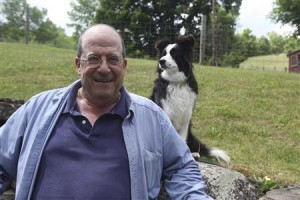
(Reuters) – Best-selling author and animal advocate Jon Katz has been writing about dogs for over a decade. Many of his own, past a present, have taken center stage fiction and nonfiction books such as “The Dogs of Bedlam Farms,” “A Dog Year,” “Izzy and Lenore” and “Rose in a Storm.”
Katz wrote his latest, “Going Home: Finding Peace When Pets Die,” which comes out on Tuesday, to provide guidance, support and advice for people on how to handle the loss of a pet.
Reuters spoke with Katz to discuss his new book and how people can cope with life when the family pet passes away.
Q: What was the biggest surprise for you in researching books about pets and grieving?
A: “I found that almost every book had to do with the afterlife. Not a single book said, ‘This is what is known about things that will help you grieve.’ So I started talking to vets and psychologists and gathering information and interviewing maybe 200 different people about what was helpful to them.”
Q: And what did you find?
A: “People need to bring rituals into grieving. Memorial services, remembrances, pictures — those are concrete things that make grieving tangible. The Internet offers all kinds of opportunities for this like making digital albums and Facebook pages. People used to have to hide grief. You couldn’t go to your boss and say, ‘I need a week off, my cat died.’ You probably still can’t, but you do need to say, ‘I’m having a tough time.'”
Q: No doubt your own personal experience went in to this.
A: “I’m one of those people who has always struggled with emotions and revealing them. When my dog Orson died, I did this very male thing of ‘It’s just a dog and I’ll just move on.’ I was very slow to grasp the emotion. But Orson is the reason I started writing about dogs. He’s the first (dog) book I wrote and HBO did a movie about him (“A Dog Year”). Writing this book inspired me to go back and look at the impact of his loss and on my life, as well as other dogs that I’ve lost.”
Q: You ended up putting Orson down. How does one deal with the guilt of making such a decision?
A: “It’s important to remember that the animals are not grieving with us. They’re very accepting. They’re not lying there thinking ‘How could you do this to me? Why aren’t you keeping me going?’ Pets don’t do the human things of guilt and anger and recrimination that we do. They come and go with great acceptance.
“One idea that I advocate is the dealing with guilt directly. Acknowledge the good life, remember the good things you did with your pet — the places you took them, the affection you showed them. Remind those who have lost a pet that they generally gave their pets a good life and that’s a good thing, so don’t forget that.”
Q: Is there any way to prepare for a pet’s death?
A: “If you’re going to love animals and have a life with them, the odds are you’re going to lose them. It’s helpful when you get a dog to accept the fact that this dog is not going to be with you your whole life.”
Q: Is getting another dog acceptable in getting over the previous one? It’s not a betrayal to the one you lost?
A: “I’m always happy when people choose to get another dog because it’s a healthy and healing thing to do, and there are millions of them needing homes. But there is no single time frame to do it in because grieving is an intensely personal experience. In my case, I get another dog as soon as I feel ready. As a dog lover, it is right for me to have them.
“With children, I don’t think it’s good if you go out and immediately get another dog or cat. Animals are not disposable any more than people. Children need to see that the loss is important, and the family should take time to honor that.”
Q: Is grief more difficult if you rescue an animal?
A: “When you rescue something, it’s very different than if you adopt or buy. Rescuing implies saving. When you rescue something and then lose it, it can be a huge factor in the intensity of the grief. I have two rescues, Izzy and Frieda. I’m working on a book about Frieda now, ‘Frieda and Me: Second Chances.’ She opened my eyes to that world of dogs that nobody wants who are often the dogs you love most.”
Q: The pet industry is bigger than ever, and it seems like people grieve over the death of animals more so today than ever before. Do you agree?
A: “Today people are developing very powerful relationships with animals. The whole idea of community is breaking down. American culture is being increasingly disconnected and fragmented. Families are breaking up and Americans spend so much time in front of screens that they’re not spending time with each other.”
Q: And that means…
A: “We need connection. We need support, love, affection. We need to bond and animals are filling this hole. And they’re doing great work at it — unconditional love, non-judgment
and companionship you can absolutely rely on. It’s a little troubling to think they are doing this instead of people.”
(Editing by Bob Tourtellotte)
There are many ways to deal with it. This was posted on facebook by Rasta’s Rescue Ranch:
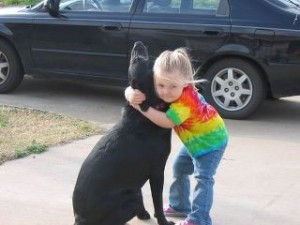 Our 14-year-old dog Abbey died last month. The day after she passed away my 4-year-old daughter Meredith was crying and talking about how much she missed Abbey. She asked if we could write a letter to God so that when Abbey got to heaven, God would recognize her. I told her that I thought we could so, and she dictated these words:
Our 14-year-old dog Abbey died last month. The day after she passed away my 4-year-old daughter Meredith was crying and talking about how much she missed Abbey. She asked if we could write a letter to God so that when Abbey got to heaven, God would recognize her. I told her that I thought we could so, and she dictated these words:
Dear God,
Will you please take care of my dog? She died yesterday and is with you in heaven. I miss her very much. I am happy that you let me have her as my dog even though she got sick.
I hope you will play with her. She likes to swim and play with balls. I am sending a picture of her so when you see her you will know that she is my dog. I really miss her.
Love, Meredith
We put the letter in an envelope with a picture of Abbey and Meredith and addressed it to God/Heaven. We put our return address on it. Then Meredith pasted several stamps on the front of the envelope because she said it would take lots of stamps to get the letter all the way to heaven. That afternoon she dropped it into the letter box at the post office. A few days later, she asked if God had gotten the letter yet. I told her that I thought He had.
Yesterday, there was a package wrapped in gold paper on our front porch addressed, ‘To Meredith’ in an unfamiliar hand. Meredith opened it. Inside was a book by Mr. Rogers called, ‘When a Pet Dies.’ Taped to the inside front cover was the letter we had written to God in its opened envelope. On the opposite page was the picture of Abbey & Meredith and this note:
Dear Meredith,
Abbey arrived safely in heaven. Having the picture was a big help and I recognized her right away.
Abbey isn’t sick anymore. Her spirit is here with me just like it stays in your heart. Abbey loved being your dog. Since we don’t need our bodies in heaven, I don’t have any pockets to keep your picture in so I am sending it back to you in this little book for you to keep and have something to remember Abbey by.
Thank you for the beautiful letter and thank your mother for helping you write it and sending it to me. What a wonderful mother you have. I picked her especially for you. I send my blessings every day and remember that I love you very much. By the way, I’m easy to find. I am wherever there is love.
Love, God
Much of the info on this post is compiled from several sources on the internet. I gave credit where available.
Adopted – A Special Home for GSD Tony
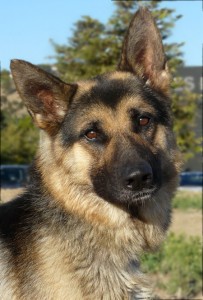
Glen Miller: Reposting from the Westside page because this is important. Sometimes a few bucks can make a big difference for a dog. This is the case.
“Tony’s dream might come true”
Tony’s options have finally run out, all we are able to offer him now is a life in a kennel. He has a problem with being incontinent from a trauma to the back of his spine, either he was hit by a car or hit with something. He loves people and other dogs, he wants to be able to enjoy life, he wants to
… be in the midst of life, but poor Tony is going to be delegated back to a 4 by 8 run. Some wonderful people are inviting Tony to Texas, he would be part of a “working ranch” with lots of people coming and going and other animals
and maybe even a job to do!
We are trying to raise money for Tony’s trip which all together would be around $600. Please help us do this for Tony! Please go to www.paypal.com, choose “Send Money” and enter: address was here Thank you so much!
See video below
For some reason, we at Helping K9s could could not say no to helping this boy with a special need to find a home and today, this notice YAYYYY:
Update: Last week Westside made an appeal for donations to get Tony sent to live out his life on a ranch in Texas. Enough money was raised (with help from a bunch of our members) to get Tony transported to his new home. This beautiful young guy will now have a forever ranch and family. Good job everyone.
http://www.wgsr.org/tony-von-m
Yes, thanks everyone and am looking forward to seeing happy pictures 🙂
We will keep you updated.
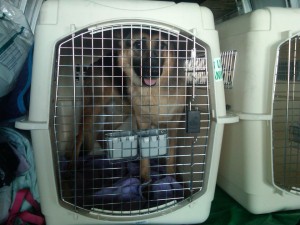
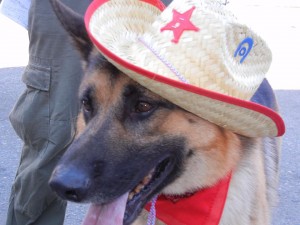 September 28, 2011: A message from Tony: “Howdy Partners! I arrived at my new home in Texas & I even got a new hat so I fit right in. I want to send a special Thank you to all of those who donated for my transport, and to my new Mom. I get to play on a ranch now with my new brothers & sisters, & there is a new Giddy-up in my step. Thanks again so much.”
September 28, 2011: A message from Tony: “Howdy Partners! I arrived at my new home in Texas & I even got a new hat so I fit right in. I want to send a special Thank you to all of those who donated for my transport, and to my new Mom. I get to play on a ranch now with my new brothers & sisters, & there is a new Giddy-up in my step. Thanks again so much.”
Beautiful what you can do – stop BSL
Had to share this video – you’ll like it
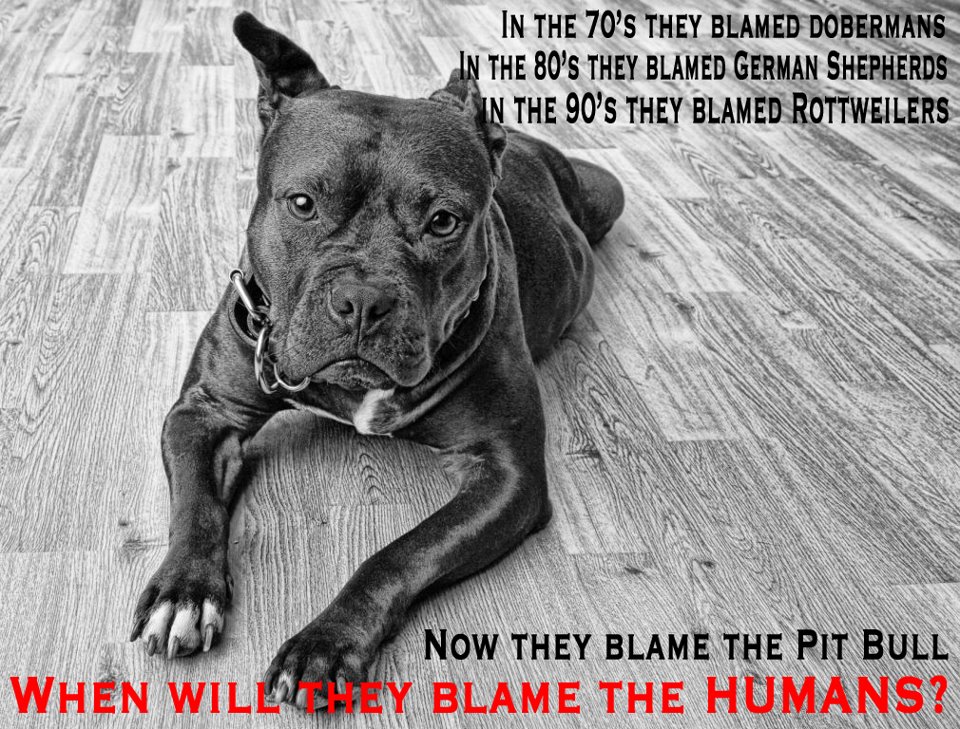
Dog saves newborn BABY – amazing animal!!
Sweet
Dogs of 9/11
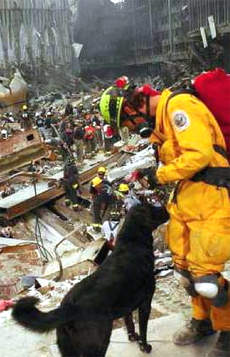 Here are 2 totally worthwhile posts on the search and rescue dogs of 9/11. The first one has some illuminating account on how search and rescue, and only finding death bodies can affect one of those K9s.
Here are 2 totally worthwhile posts on the search and rescue dogs of 9/11. The first one has some illuminating account on how search and rescue, and only finding death bodies can affect one of those K9s.
and
Honoring surviving search & rescue dogs of 9/11
Dog Breeds – The German Shepherd dog
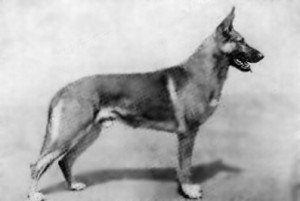
For the moment, if you would like some information on the various breeds, please check out the links below (I know it will take you off this site and we really want you to read about the natural dog training – but they are worth it)
Evolution of the German Shepherd Dog
Teaching empathy in schools – a missing link to a kinder world
Human’s are hardwired for connection. Yet empathy seems to be lacking everywhere. Slowing down and listen inside, listening to others and connecting can be taught in schools. Here are just 2 programs that are READY NOW to be incorporated in a school near you. It will change the next generation – for a kinder, less selfish world.
MindUP™ Program, the Hawn Foundation
When students learn the brain-friendly focusing strategies and self-awareness practices of Units 1 and 2 they prepare themselves for their application in Units 3 and 4. The MindUP™ program is designed to strengthen students’ social and emotional competencies while creating a cohesive, optimistic classroom.
MindUP™ consists of fifteen engaging lessons presented in three developmentally appropriate levels: Pre-K through second grade; third through fifth grade; and, sixth through eighth grade. The program is organized into four units:
- Let’s Get Focused! (1. Learning How Our Brains Work; 2. Understanding Mindful Attention; 3. Focusing Our Awareness: The Core Practice)
- Paying Attention to Our Senses (4. Mindful Listening; 5. Mindful Seeing; 6. Mindful Smelling; 7. Mindful Tasting; 8. Mindful Movement I; 9. Mindful Movement II)
- It’s All About Attitude (10. Perspective Taking; 11. Choosing Optimism; 12. Savoring Happy Experiences)
- Taking Action Mindfully (13. Acting with Gratitude; 14. Performing Acts of Kindness; 15. Taking Mindful Action in Our Community)
About The Mutt-i-grees™ Program, from a blog by Ceasar Millan
Developed in early 2009 by Yale 21C in collaboration with North Shore Animal League America’s Pet Savers Foundation and using Cesar Millan’s principals, the Mutt-i-grees curriculum focuses on teaching self- and social-awareness, relationship skills, and the ability to make ethical decisions that benefit people, animals, and the environment. The research conducted by Yale University is discovering a positive effect on the children who have participated in the program. The children have developed empathy and other social and emotional skills such as being able to understand and label feelings, self-awareness and cooperation among children. Importantly empathy is a social skill related to cognition and is often referred to as the missing piece in educational reform.
to see entire blog please go here